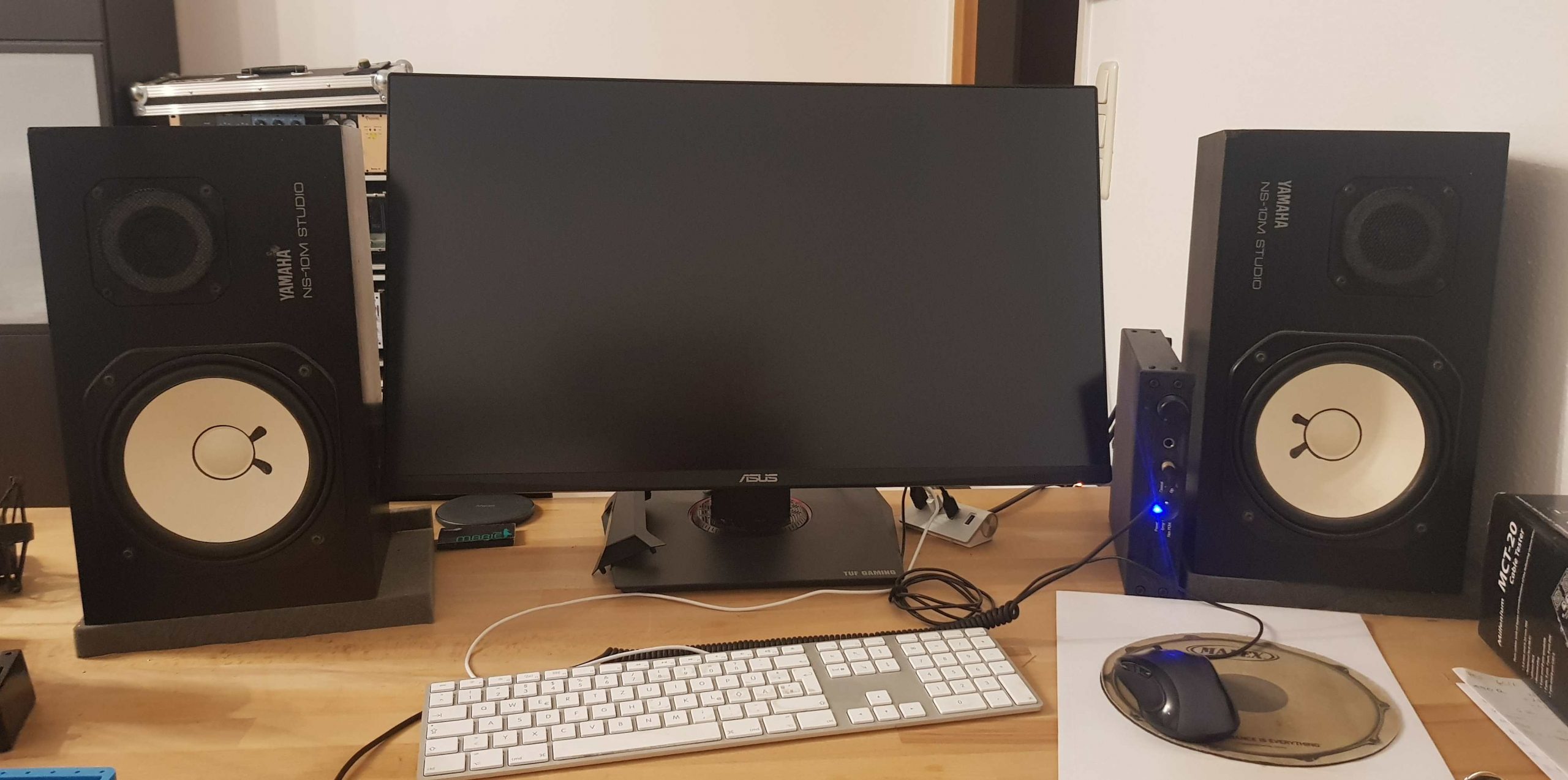
Loudspeaker Legends – Yamaha NS10M and Modifications
The Yamaha NS10M can be seen on the meterbridge in many studios.
While they were discontinued years ago, many are still in use.
One reason may be that they sound quite forward, with good insight
on recording or mixing problems.
But some users approached me with the idea to equalize them towards
a flatter response.
Desktop reflections may cancel some of that hot presence shown below,
and help to assist the weak low-end. Nevertheless, they sound colored.
Measurements and modification
Since I liked some aspects of their sound, I bought a pair around 1998.
And found an easy to apply modification.
It’s also cheap, in case you want to try. But please let someone
else do it if you lack necessary skills!
1 m frequency response, without (yellow) and with (red) mod.
Please ignore LF response, room influence and sloppy measurement …
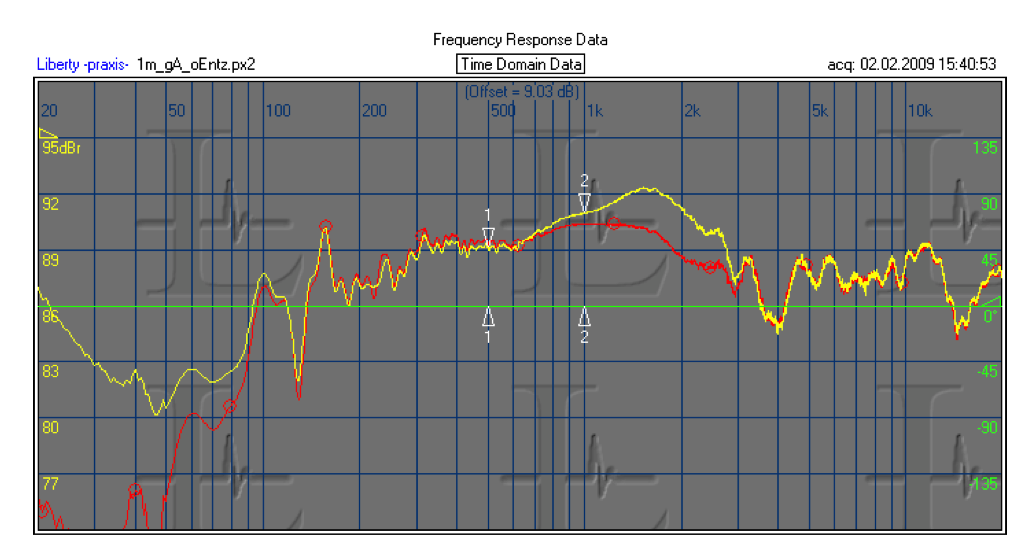
I measured a few others of those modified over the years,
sometimes a little higher or lower with regard to tweeter axis.
Therefore the response may differ a bit – but the general tendency
is obvious.
The following plots show yellow = modified, red = standard
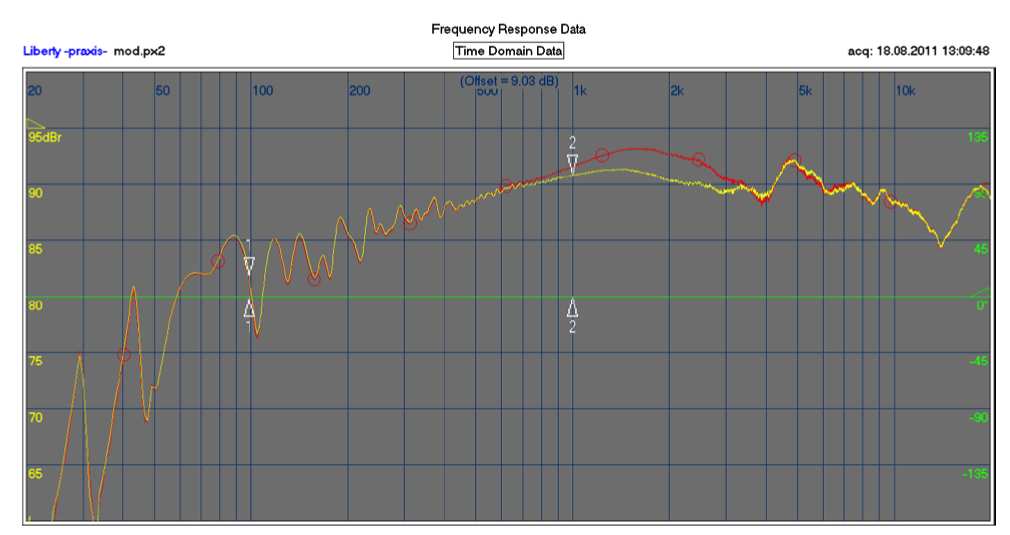
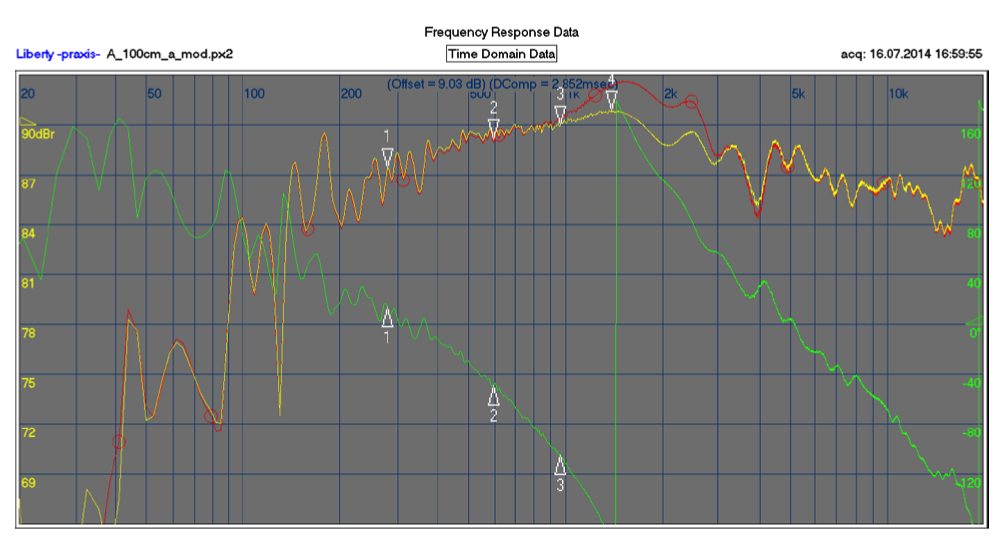
Other measurements
For those with deeper interest in loudspeakers, here the stepresponse
(sorry, didn’t found time to zoom into the first few ms). Classical 4th order (acoustical, not electrical) crossover. Woofer follows tweeter.
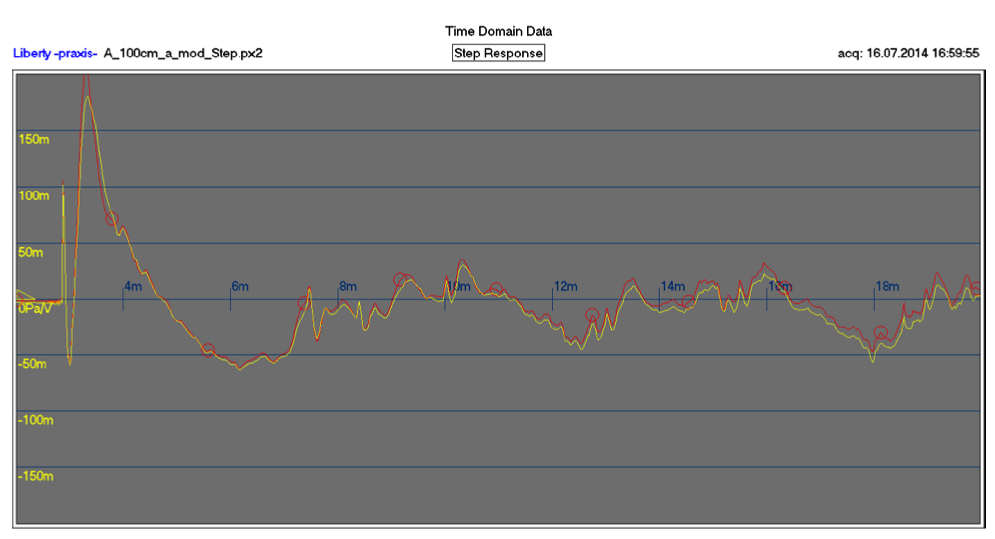
Sample to sample comparison of a pair:
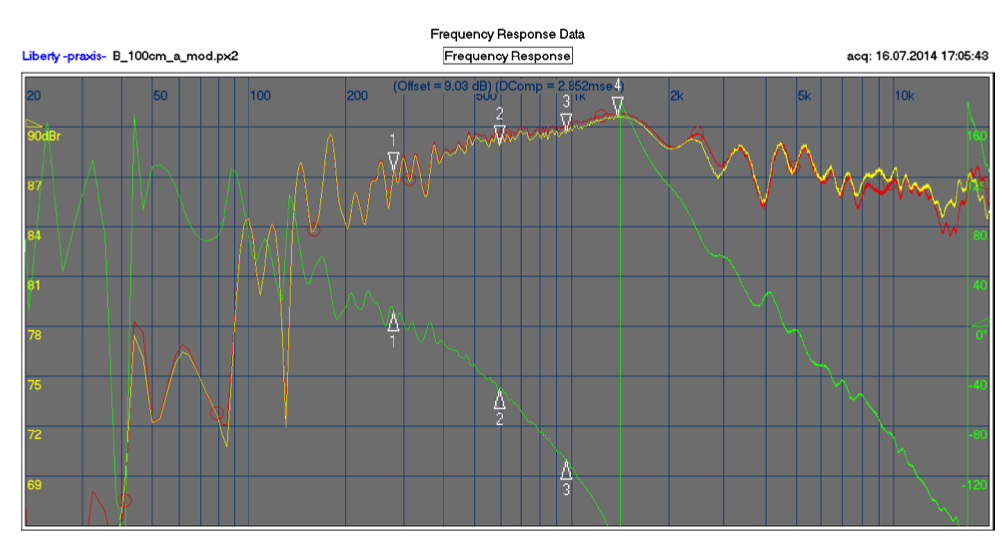
I also made measurements in all directions to verify no harm done by
the mods. The phase lag introduced by the presence reduction of the
woofer tends to improve the crossover to the tweeter.
So, how to modify?
A series-connection of 10 microF polypropylene capacitor + 18 ohms resistor is soldered parallel to the woofer connections. This reduces the influence of voicecoil inductance to the crossover, hence lowering upper midrange level. That’s it.
Do not use cheap components, the basic crossover also uses quality parts.
Take care to use adequate power and voltage ratings. If you do not know
how to – again, please ask for help. To prevent small explosions or fire.
And try to keep the components away from the woofer magnet.
I take no responsibility for the result, in case you try this!
While I sold my pair long ago, I liked the result. Weak bass stays, of course,
70 Hz resonance closed cabinets with short throw woofers have limits.
But what is to be heard, is mostly clean, with good midrange. Plots are 2.83 V calibrated 1m response, and show relatively high sensitivity. Less coil current for better sound.
As can be seen from the measurements, I kept some of that slightly forward
characteristic. They still do what they do best, with lower coloration.